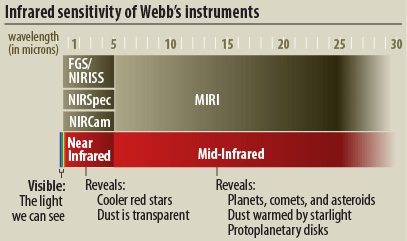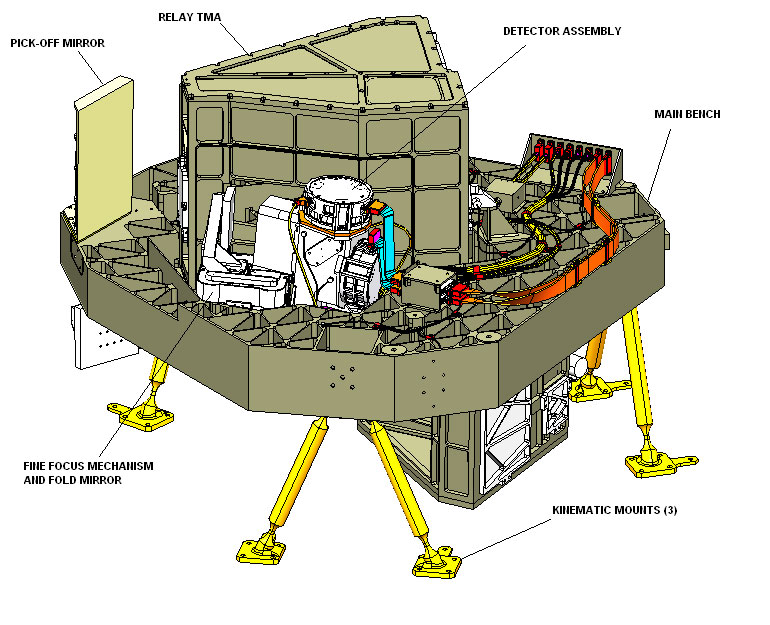FGS is a "guider," which helps point the telescope. NIRISS is used to investigate the following science objectives: first light detection, exoplanet detection and characterization, and exoplanet transit spectroscopy.
FGS/NIRISS


Fine Guidance Sensor /
Near InfraRed Imager and Slitless Spectrograph (FGS/NIRISS)
The Fine Guidance Sensor (FGS) allows Webb to point precisely, so that it can obtain high-quality images. The Near Infrared Imager and Slitless Spectrograph part of the FGS/NIRISS is used to investigate the following science objectives: first light detection, exoplanet detection and characterization, and exoplanet transit spectroscopy.
FGS/NIRISS has a wavelength range of 0.8 to 5.0 microns, and is a specialized instrument with three main modes, each of which addresses a separate wavelength range. FGS is a "guider," which helps point the telescope.
Video: FGS/NIRISS 3d Diagram Rotation
Other Resources:
- The Space Telescope Science Institute has a technical page on the NIRISS:
- More about the detectors in our instruments
- Image Gallery of FGS/NIRISS







